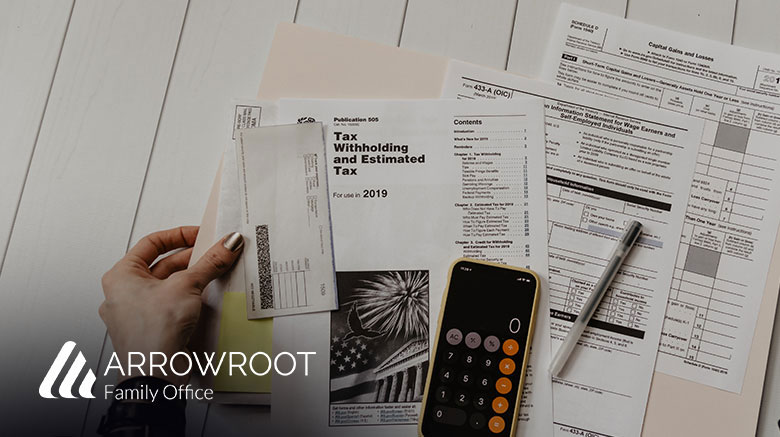What Type of Retirement Plan Is Best for Self-Employed Workers?

Rory Henry
Director
Rory Henry is an accredited Behavioral Financial Advisor, a methodology that combines traditional finance, psychology, and neuroscience. He is the Director at Arrowroot Family Office and Co-Founder of AFO Wealth Management Forward. He has been in the tax and financial advisory profession for 15+ years.
MCO
MyComplianceOffice
A complete compliance management software platform that helps financial services firms unify their activities across conduct and regulatory compliance.


Now more than ever before, individuals are quitting their jobs to work from home online, or increasingly, have found themselves starting their own businesses in search of better pay or more satisfying work. With so many individuals opting for self-employment, the Bureau of Labor Statistics (BLS) has found that nearly 9 million Americans described themselves as self-employed in 2022, which was the highest number on record in the past 13 years.
While self-employment provides the freedom and convenience to work however one wants, wherever one wants, and whenever one wants, some challenges and obstacles do present themselves in the form of retirement savings. When an individual is employed, they have the luxury of employee benefits at their fingertips in the form of various insurance plans and employer-sponsored retirement plans such as the 401(k)matching policy. When one is self-employed, that option goes away, and the individual is left to find another option themselves. So what other options are available to self-employed individuals?
Individual Retirement Accounts (IRAs)
Anyone who earns an income can open an IRA account regardless of whether they are employed or not. There are two types of IRAs, the traditional IRA, where individuals can make contributions pre tax, and the Roth IRA, where contributions are made with taxed income. This means that upon retirement, Roth IRA funds can be withdrawn tax-free. These IRA contributions are not considered a business expense; however, they may help reduce one’s individual tax liability.
The maximum IRA contribution limit for 2023 was listed at $6,500, with an additional $1,000 in catch-up contributions established for savers who are over 50. With such an easy and quick setup, both types of IRAs offer a wide variety and range of flexible investment options. IRA accounts are open to all working individuals with no limitations, regardless of employment or not. Anyone who earns income can contribute to an IRA in addition to any other plans outlined below. However, compared to other self-employed retirement options, IRAs are considered to offer lower contribution limits to individuals. Available tax deductions may also have the ability to limit individuals who file jointly with their spouse or are covered by another retirement plan. Roth IRA eligibility can also be limited by income. Excluding certain exceptions, withdrawing funds from a traditional IRA prior to the age of 59 ½ can cause a severe penalty of 10% of one’s withdrawal.
Income limits also play a crucial role in IRAs. In 2023, the income phase-out limits for Traditional IRA and Roth IRA were subject to specific ranges. For Traditional IRA, single filers could contribute between $129,000 and $144,000, while married couples filing jointly have a limit of $204,000 to $214,000. Heads of household fall within the range of $168,000 to $183,000. In the case of a Roth IRA, single filers have a contribution window of $138,000 to $153,000, while married couples filing jointly have a limit of $218,000 to $228,000. Heads of household fall within the range of $178,000 to $193,000.
However, if your income surpasses these phase-out limits, there is still a chance to contribute to a Roth IRA if you are not covered by a retirement plan at work. In this scenario, your contribution amount will gradually decrease in line with your income until it reaches the upper limit.
To illustrate this example, let’s consider a single filer with an income of $135,000, an individual who would be qualified and able to contribute $1,000 to their Roth IRA. However, if the individual’s income increases to $140,000, the contribution is reduced to $500. Lastly, if an individual’s income reaches $145,000, contributions to a Roth IRA are no longer permitted.
It’s worth noting that the income phase-out limits for IRA and Roth IRA are determined by the Internal Revenue Service (IRS) and are adjusted annually to account for inflation.
Helping you achieve your evolving financial objectives
Simplified Employee Pension IRA (SEP IRA)
The SEP IRA is an alternative version of a traditional IRA that offers similar tax benefits and deductions with higher contribution limits. This account is just as easy and quick to set up as a standard traditional IRA; however, this retirement account was made specifically for self-employed individuals and small business owners.
The maximum SEP IRA contribution limit for 2023 was listed at 25% of one’s adjusted net earnings, minus half of one’s Social Security and Medicare taxes that self-employed individuals must pay themselves and any planned contributions the individual makes for themselves, up to a maximum of $66,000. Self-employed individuals must pay their own social Social Security and Medicare taxes as this amount is generally taken out of an employee’s paycheck and paid automatically while an individual is employed.
As iterated before, SEP IRAs are especially easy to open, set up, and maintain. This plan isn’t rare or unheard of as many of the best fiduciary IRA providers offer this type of plan to self-employed individuals with a wide range and variety of great investment options to choose from. SEP contributions are tax deductible up to the listed maximum allowed per year. This amount can also be applied to the prior year’s taxable income up to the designated due date. This includes any extensions on the prior year’s tax return. SEP IRAs are also non-exclusive with other IRA accounts, meaning you can still contribute to other IRAs up to the maximum contribution amount limits. However, because SEP IRA contribution limits depend on one’s incoming annual income, the actual amount one can save for their retirement each year could vary. Just as with other IRA options, individuals are not able to remove money from SEP IRAs prior to their 59 ½ without receiving a severe 10% penalty on their withdrawals, baring a few listed exceptions.
Savings Incentive Match Plan for Employees (SIMPLE IRA)
The SIMPLE IRA is another version of the IRA, similar to the SEP-IRA, designed for self-employed individuals and small business owners who employ less than 100 individuals.
While a SEP IRA was created solely for self-employed individuals and small business owners to invest their own contributions into their retirement fund, the SIMPLE IRA was established to provide employees of small businesses the opportunity to invest and save for their retirement. Small businesses often do not have an employer-sponsored retirement plan, such as a 401(k), available to their employees, so a SIMPLE IRA plan is a good alternative that allows employees to still save for their future.
The maximum SIMPLE IRA contribution limit for 2023 was listed at $15,500, with an additional catch-up contribution of $3,500 established for individuals who are over 50. Self-employed individuals and small business owners themselves can either contribute a fixed contribution of 2% or a matching contribution of 3% to their employees as a part of an employer matching policy. This means that SIMPLE IRA contributions are tax-deductible, and the retirement plan tends to be relatively easy to set up and maintain with low fees required in its operation and creation. SIMPLE IRAs allow self-employed individuals to contribute both as an employer and an employee, allowing them to save more overall than they could have with a SEP IRA or a traditional/Roth IRA. However, barring just a few exceptions, an individual is not able to contribute to a SIMPLE IRA if they have another retirement plan already set up and in use. Similarly to other IRAs, withdrawing funds prior to the age of 59 ½ can have individuals paying a penalty fee of 10% and a penalty fee of 25% if the withdrawal occurs within the first two years of operation within the plan. In addition, one is not able to rollover funds from a SIMPLE IRA to any other retirement plan within the first two years of participation with the plan.
Solo 401(k)
Lastly, the Solo 401(k), also commonly known as the individual 401(k), is a similar plan to the traditional employer-sponsored 401(k) plan. However, the main difference is that this plan is only for self-employed individuals, meaning that one is not able to contribute to this plan if they have any other registered employees under their payroll besides one’s spouse. One is able to make contributions as an “employer” and an “employee,” providing self-employed individuals with another way to save additional funds for their retirement.
The maximum Solo 401(k) contribution limit for 2023 was listed at $22,500 in 2023, with an additional $7,500 established for those that are older than 50 as a catch-up contribution. As the employer, self-employed individuals are able to contribute up to 25% of their net income, with totals not exceeding $66,000 or $73,500 for those older than 50. Just as with the SIMPLE plan, self-employed individuals can contribute to a Solo 401(k) both as an employer and employee, allowing them to contribute additional funding than they otherwise could have towards their retirement. Individuals are also able to decide whether to make tax-deductible deferrals or post-tax Roth deferrals based on their current income level or needs. However, these plans can be more complex to operate and maintain, with investment options being far more limiting than with other IRAs.







Leave a Reply